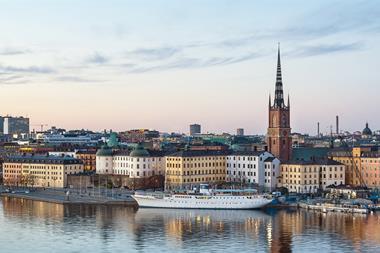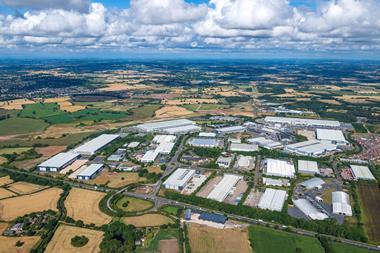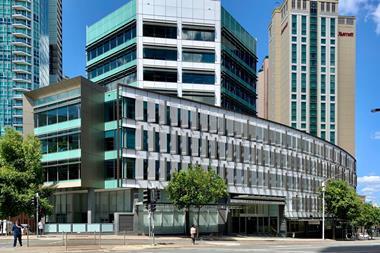Cooked core is no longer a safe haven, but are investors ready to move on?
The core market is not just hot - it's cooked, Fidelity head of research for Europe Matt Richardson said at the launch of the IPD pan-European property fund index this week.
Most fund managers would tend to agree. Some, like Ben Habib at First Property Group, have been questioning the fundamentals underpinning London's West End boom for years. Others, like Fidelity itself, have been looking in the past few years at investor-neglected but good-quality secondary. Richardson pointed out that the current cycle has been the first to feature an integrated European market, and pari passu a cross-border risk/return profile. So UK investors, for example, instead of moving from the capital to secondary regional markets, moved between (heating, hot and hotter) European cities.
There remains appetite for so-called safe-haven assets - London attracted £32.5bn (€38.9) in investment during 2011, for instance - but it isn't coming from the same sources as it was. Would-be takers for prime are now less likely to be European property funds and pension schemes and more likely to be 'gold' investors concerned with wealth preservation. "We need to be aware that funds are only part of the picture," said Richardson. "Prices in Paris and London have been liquidity driven, not driven by property funds."
Pramerica managing director Ben Penaliggon identifies two kinds of capital in the European real estate market now: security and income-seeking, and opportunistic. "The income-seeking camp wants to preserve capital and hedge inflation, with an eye on the yield spread between bonds and real estate. Capital is partly coming from Europe because of uncertainty in the euro-zone, but it will be more broad-based, including, for example, Asian capital," he said this week.
IVG's Thomas Beyerle, long a critic of German investors' unwillingness to look across the street for fear they will take on more risk, this week told journalists that Poland had likewise become the investment destination of choice for "diametrically opposed" groups of investors: those focused on growth and more cautious ones attracted by macroeconomic and sector stability.
Opportunity cost
The problem is that core is not a synonym for stability. One private equity investor told IP Real Estate the revised INREV definition of core effectively ruled security out. "I would never consider a fund core if the LTV were 80% - otherwise you introduce volatility," he said. "The new definition doesn't tell you whether your investment is low risk or not. It's like smoking three packets of cigarettes and drinking a bottle of wine a day, and the doctor tells you to stop drinking."
Add to the risk the opportunity cost of safe-haven acquisitions at less-than-compelling yields. Andrew Thornton, chief executive at Internos Real Estate, says his firm's analysis justifies recent doubts over the overconcentration on prime real estate. In a bulletin dedicated to alternatives to prime, published this week, he wrote: "As so often happens, when risk avoidance is dominant in the investor's mind, opportunity cost considerations may get overlooked. Comparisons with other asset classes, notably equities, demonstrate the opportunity cost of an addiction to prime real estate."
Pinning a yield gap above 3% between prime real estate in equities as "essential" to justify investors' addiction, Internos points to a long-term deterioration across major European markets.
Claude Angeloz, co-head of the private real estate team at Partners Group, concluded from the same point that instability makes it unwise to pin capital to one sector or market.
"Although macro and real estate fundamentals are nowhere near where they were in 2005 and 2006, we're seeing prices in London's West End that we last saw in 2006," said Angeloz. "If you were focusing only on the UK, you would have missed the opportunities."
Toe-dipping
So will investors, as Thornton suggested this week, get close to the dirt and abandon not-so-safe prime property markets for yield and value within secondary ones?
It would make sense, if that means adding sufficient value to upgrade it, as he suggested. "Good secondary can be managed to prime," he wrote this week in 'The decisive eye'. "Prime, because of the observations of the creeping impact of sustainability agendas, has nowhere to go but sideways or downwards."
As Thornton acknowledged, investing in prime and investing in secondary are effectively require two different skill sets. Clearly, prime requires fewer asset-level judgements, but acquiring at below-trend capital values and selling above makes sense only if you buy at below-trend capital values.
In the meantime, cooked it may be, but that does not necessarily mean core opportunities have disappeared entirely. CBRE Global Investors sees opportunities in prime multi-let industrial and in European port cities such as Amsterdam and Hamburg, though none in office.
According to Penaliggon, despite "nosebleed prices" in prime, it made sense to be attentive to mispricing. "There are fleeting windows of generating liquidity," he said. "You have to be attentive to stock-picking and active management in the income space."


















